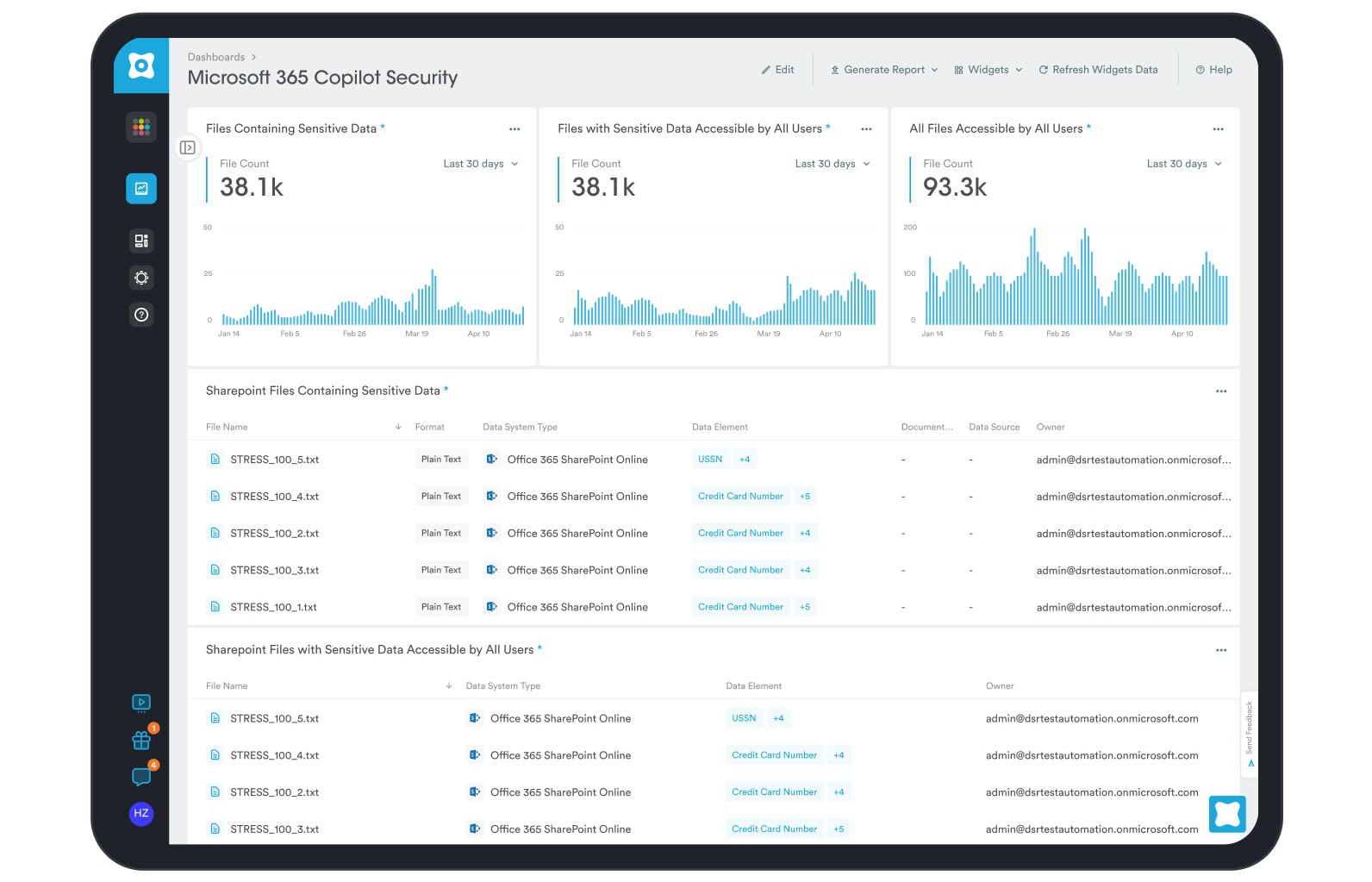We are delighted to introduce new capabilities in Securiti Data Command Center - Security for SaaS AI Copilots in SaaS Apps! The biggest impediment in adopting AI Copilots, like Microsoft 365 Copilot, is the security & governance of data. Organizations must ensure that data does not inadvertently leak to the wrong employees via Copilot prompt responses, nor get exposed to third parties and AI plugins. Securiti provides comprehensive capabilities for preventing such issues, enabling organizations to confidently boost employee productivity while ensuring robust security and continuous data controls.
AI solutions like Microsoft 365 Copilot offer a game-changing way for employees to access and leverage vast amounts of enterprise data across M365 applications. It is designed to enhance productivity by providing seamless search and analysis capabilities. However, this power comes with a new set of risks. In the rush to enable Copilot, some organizations have overlooked critical data governance controls—leading to unintended access to sensitive information. Employees can unknowingly query confidential data that isn’t their own, such as salary details of other employees, company M&A plans, and even secrets like passwords—data they should not be able to access.
The risks don’t stop there. With Microsoft Copilot’s deep integration with services like Bing search and third-party applications, corporate data may be exposed beyond the secure boundaries of the M365 environment.
But why is securing Copilot so challenging? The complexity lies within the Sharepoint data security and governance, where the majority of M365 data resides.
See: Top companies ground Microsoft Copilot over data governance concerns (Source: The Register)
“Security and corporate governance concerns are weighing heavily on large enterprises as they try to work Microsoft Copilots into their organizations amid a complex web of existing tech products and access rights.”
— The Register
According to a recent Gartner report, only 6% of the organizations piloting Microsoft 365 Copilot have completed projects and are ready for large-scale deployments. Securiti’s solution, Security for SaaS AI Copilots, powered by its Data Command Graph™, equips organizations to harness data safely with automated data access and governance controls. With granular, file-level contextual intelligence, out-of-the-box risk insights, and automated remediation, Securiti’s latest innovation prevents unintended data exposure, strengthens security posture, and enhances the efficacy of Copilot responses to deliver safe, precise, AI-driven insights to employees.
Is Your Microsoft SharePoint Environment Ready for Copilot?
For many organizations, SharePoint environments are far from clean or secure, and with the introduction of Microsoft Copilot, these issues become more pressing.
Here are the Seven Key Challenges organizations face in securing SharePoint:
- Over-Privileged Access: Security teams often grant broad access to SharePoint files by default to avoid managing individual permission requests, leading to overexposed sensitive data.
- Lack of Visibility: Many organizations don’t know who can access what data or where sensitive data resides, making it difficult to identify and address access risks effectively.
- Complex Permissions Management: With billions of possible permission combinations, managing who should access which files becomes an overwhelming task.
- Ineffective Data Labeling: Microsoft’s native tools don’t accurately label files and impose limits on the number of files that can be labeled per day. Lack of an effective labeling process makes it difficult to govern data at scale.
- Obsolete Data: Many organizations store outdated data for years, leaving it ungoverned. When Copilot retrieves this obsolete information to respond to a prompt, it can provide wrong answers to employees.
- Balancing Security and Productivity: Employees need swift access to data for productivity, but security teams are tasked with enforcing data controls. Balancing these priorities is a constant challenge.
These challenges aren’t new, but Copilot amplifies them—making it essential to reevaluate your SharePoint security approach.
















































